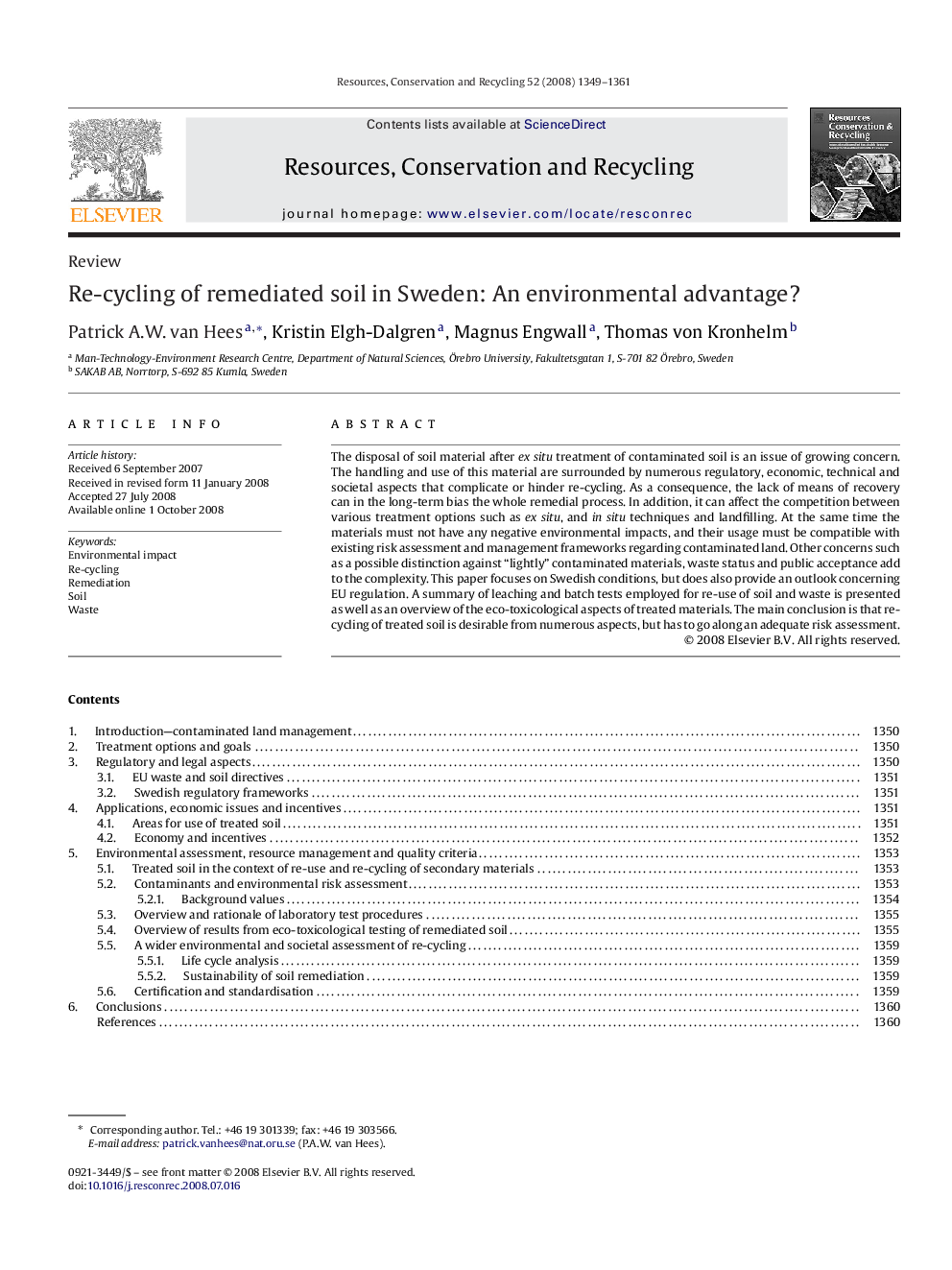| Article ID | Journal | Published Year | Pages | File Type |
|---|---|---|---|---|
| 1063777 | Resources, Conservation and Recycling | 2008 | 13 Pages |
The disposal of soil material after ex situ treatment of contaminated soil is an issue of growing concern. The handling and use of this material are surrounded by numerous regulatory, economic, technical and societal aspects that complicate or hinder re-cycling. As a consequence, the lack of means of recovery can in the long-term bias the whole remedial process. In addition, it can affect the competition between various treatment options such as ex situ, and in situ techniques and landfilling. At the same time the materials must not have any negative environmental impacts, and their usage must be compatible with existing risk assessment and management frameworks regarding contaminated land. Other concerns such as a possible distinction against “lightly” contaminated materials, waste status and public acceptance add to the complexity. This paper focuses on Swedish conditions, but does also provide an outlook concerning EU regulation. A summary of leaching and batch tests employed for re-use of soil and waste is presented as well as an overview of the eco-toxicological aspects of treated materials. The main conclusion is that re-cycling of treated soil is desirable from numerous aspects, but has to go along an adequate risk assessment.
